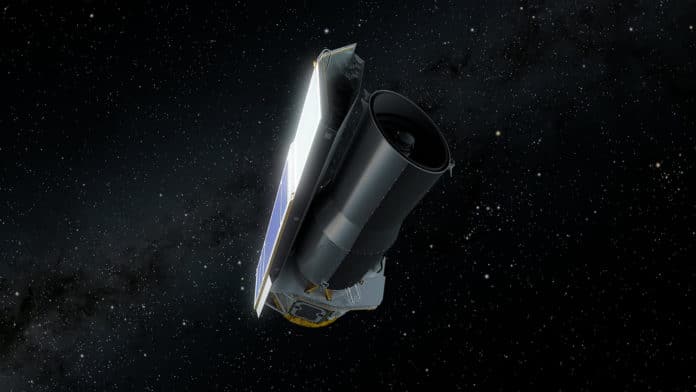NASA has announced the completion of the Spitzer Space Telescope mission that has been studying the Universe in infrared light, revealing new wonders in our solar system, our galaxy, and beyond for over 16 years. The telescope, which carried out observations in the infrared range, was put by mission engineers in safe mode, ceasing all science operations.
Launched on August 25, 2003, from the Kennedy Space Center, the Spitzer Space Telescope spent 6002 days in space, gathering a wealth of valuable data during its mission. In addition to the Hubble Space Telescope, the Chandra X-ray Observatory, and the Compton Gamma Observatory, Spitzer was one of NASA’s four large space telescopes.
Its structure was originally designed for a five-year mission but lasted more than 16 years. When launched, the Space Telescope was the most sensitive infrared instrument in the world. It was the Big Observatory program that demonstrated the power of using different wavelengths of light to create a complete picture of the Universe. During its work, Spitzer made many surprising discoveries.
For example, it studied the comets, asteroids in our solar system, the formation of stars and planets, the evolution of galaxies, as well as the composition of interstellar dust. It addition, it discovered a previously unknown ring around Saturn. The Space Telescope was also considered a powerful tool for detecting exoplanets and studying their atmospheres. Spitzer’s most famous work may be to detect seven Earth-sized planets in TRAPPIST-1, the largest number of terrestrial planets ever found in a single star’s orbit, and determine their mass and density.
In 2009, Spitzer ran out of refrigerant reserves, so its primary mission was completed; however, several device tools continued to work – for about ten years.
“Spitzer has taught us about entirely new aspects of the cosmos and taken us many steps further in understanding how the universe works, addressing questions about our origins, and whether or not are we alone,” Thomas Zurbuchen, associate administrator of NASA’s Science Mission Directorate in Washington said in a statement. “This Great Observatory has also identified some important and new questions and tantalizing objects for further study, mapping a path for future investigations to follow. Its immense impact on science certainly will last well beyond the end of its mission.”
Although the mission of the Space Telescope is over, its information has not yet been fully processed. It also leaves behind an archive of data that astronomers will continue to work. In the future, experts may announce new discoveries related to Spitzer.
